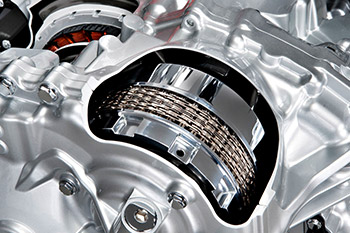Honda’a automobile division has converted to CVT trannys in the newest Accord and, typical of Honda engineering, its design and function is unique and exclusive to the brand.
Honda’s car CVT uses a torque converter combined with a continuously variable primary-secondary pulley system just like most CVTs and a steel drivebelt running in an oil bath to control belt heat and friction.
The idea of using a torque converter means the belt is engaged all the time with both pulleys turning, much like a CVT using a Sprague clutch, but engagement is butter smooth and gear ratios can be tuned very precisely as the vanes in the torque converter make the drive even more variable.
Honda is very pleased with the durability and reliability of the CVT and the fact it has way fewer parts than a slush box makes it cheaper to manufacture and way lighter.
We think Honda is testing this tranny in upcoming new models of the Rincon (due for an update) and in its Pioneer SxS, both of which use an automotive style torque converter transmission now.
Using a proven CVT opens the door for a long list of new models – possibly with higher performance engines – and we think, an open opportunity to leap into the high performance SxS field to compete with the Wildcat and RZR.
We’re also pretty sure Honda would like to be viewed as THE innovator in off-road and this unique design, entirely adaptable to ATV and SxS use, would set the company apart in a very significant way.
There’s no question reliability standards would be very high and the fact the system doesn’t use a rubber drivebelt would be seen as a plus by many consumers.
As usual, we’re only guessing, but we think the success of this CVT and its many benefits to Honda will see it on off-road vehicles within the next 24 months.




